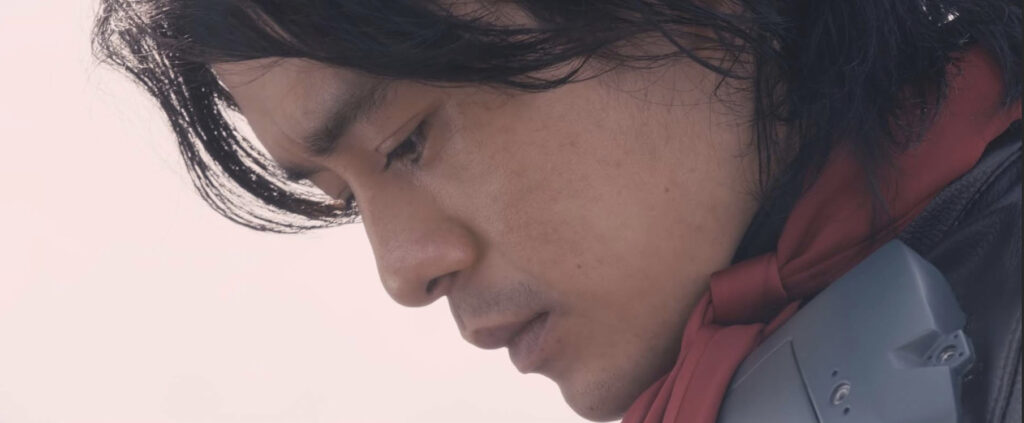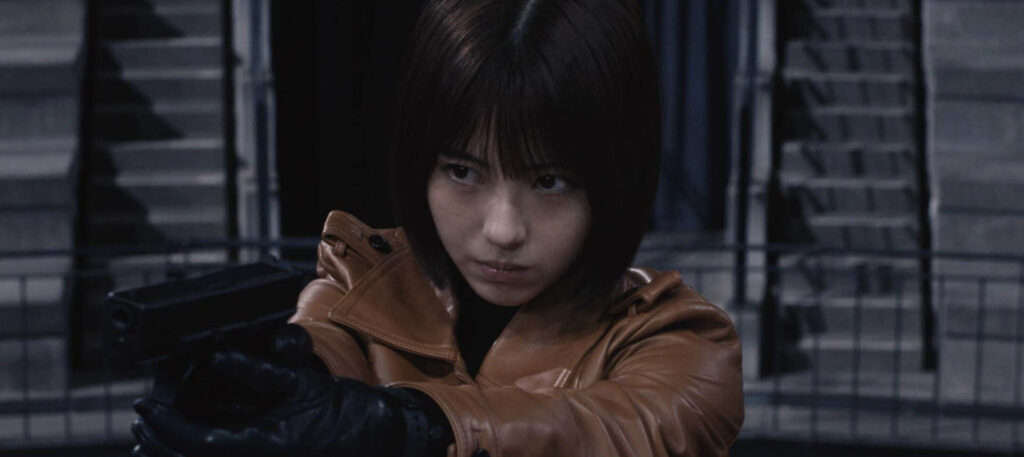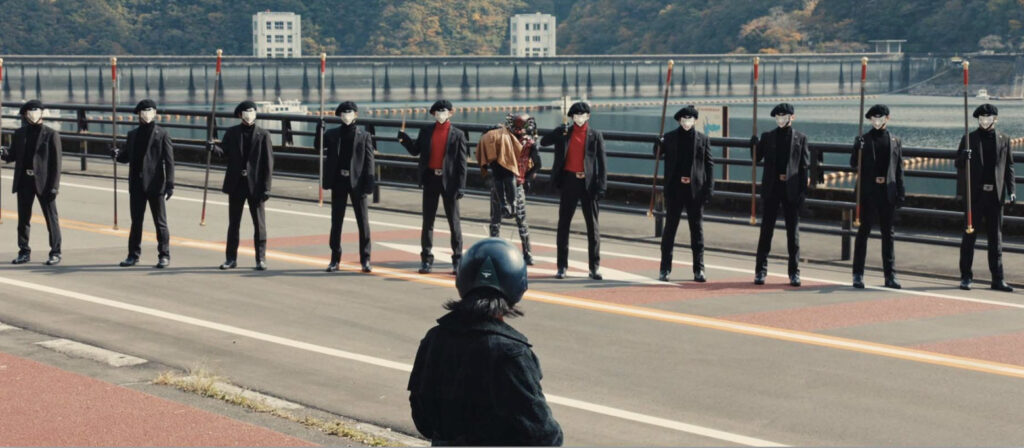
During the last few years, director Hideaki Anno has successfully re-defined Japanese monsters/heroes through the Shin series. “Shin Godzilla” was a satire of Japanese politics, a reflection on the March 11 disasters. “Shin Ultraman” — which retained Anno as the mastermind — had the directorial duties passed onto Shinji Higuchi, his frequent collaborator, and this film reinvents the iconic hero.
Again, director Anno has been handed the reins to one of Japan’s most beloved special effects franchises and was allowed to run wild. Now he tackles “Shin Kamen Rider” which is, arguably, his most personal work in a way, since it seems that Kamen Rider himself is viewed as a very different beast by Anno.
The original franchise began in 1971 as a relatively obscure tokusatsu hero compared to its contemporaries. Created by none other than manga artist Shotaro Ishinomori, who envisioned a much darker hero.
The Kamen Rider is characterized by being a more “deformed” hero who is distinctly different from the conventional live-action heroes. It minimizes human drama through a bizarre dramatic style. Dynamic action scenes depict “rider kicks” on a moving motorcycle, as well as the appearance of peculiarly grotesque monsters based on various plants and animals including insects.

Even though the original TV series had ended, there were many other programs that were produced with different characters, other evil organizations, based on new timelines, and worldviews. Each program was basically titled after the name of the main character of “Rider” (i.e. Masked Rider).
In the original series, both Kamen Rider and SHOCKER —the enemy organization — were cut from the same cloth, having escaped brainwashing from the evil group whose characters had ties to Nazis.
Without an introductory setup, Anno’s film starts with motorcyclist Takeshi Hongo being kidnapped by SHOCKER (which stands for Sustainable Happiness Organization with Computational Knowledge Embedded Remodeling) and is transformed into the mutant cyborg known as the Kamen Rider. However, before the transformation is complete, he escapes with the help of Ruriko Midorikawa, the daughter of a scientist who has modified Takeshi’s body to have super strength. He’s also given a cool grasshopper-shaped helmet as well. As he fights to protect Ruriko and escape SHOCKER, the power of Hongo’s new abilities allows him to make a brutal attack on the shockers sent after them, pummeling and attacking them until their blood shoots into the sky.
It’s a moment that startles both our protagonist, who couldn’t believe he possessed such power — as well as the unsuspecting audience — which he needed to make the fight for justice. As we see his bloodstained hand from that first fight against the group’s nefarious actions, Hongo uses those same hands to fight for his notion of justice. He faces the choice between justice and injustice, about whether to continue fighting while knowing that by doing so he risks not only causing physical harm but he will also have to live with the psychological impact of inflicting pain on others. That becomes the core of the Shin Kamen Rider’s theme.

The people chosen by SHOCKER to become augments (remodeled humans) are “weak” people who couldn’t overcome their misfortunes and despair. Each augment is incompatible with the other — there’s the Bat Aug, which can infect humans with bat viruses; the Bee Aug can enslave all humans; the Butterfly Aug hopes to turn humans into prana; and there’s human-hating Spider Aug and also the Scorpion Aug.
They’re united by a “loose solidarity” of being a SHOCKER member, of being a modified human being. Clearly they can’t coexist, so they will clash at some point. As the “weak” ones they must first heal “their despair” by brainwashing or killing other people. That is why they became converted human beings.
Then there’s the character of K, an autonomous artificial intelligence which observes the outside world. K “observes” the behavior of people who are subjected to “absurdity,” and by the weak getting an additional variable, the power of augmentation, he amplifies the absurdity even further. In other words, he encourages the weak, giving them weapons, and feeds off of the resulting confusion/absurdity, an aspect of our evil side.

Throughout the film, Anno embraces a ‘70s-styled camp, but that’s not to say Anno displays an original style of his own here. The film is shot and edited in the director’s signature style with face-warping closeups and a dizzying number of cuts. The action scenes (which make up a majority of the film) are thrilling, but some of the sequences are hard to follow because in the way it’s shot, it has a murky look.
When the half-baked Augments are introduced without their motives being made clear, there’s far too much information crammed into the scenes to make them understandable. As a result, the pace drags at the middle of the film (around the time of the bee aug).
Overall, “Shin Kamen Rider” is a solid film and a love letter to one of the grandfathers of the tokusatsu TV shows. It stays true to the previous Kamen Rider films and the original manga, even though SHOCKER has been re-conceived from being an evil secret organization to being an organization which fulfills the desires of humanity. In the end, Anno creates an entertaining film which can be enjoyed even if you’re not familiar with the original manga or TV series.

Grade : B+
Check out more of Nobuhiro’s articles.
Here’s the trailer of the film.

